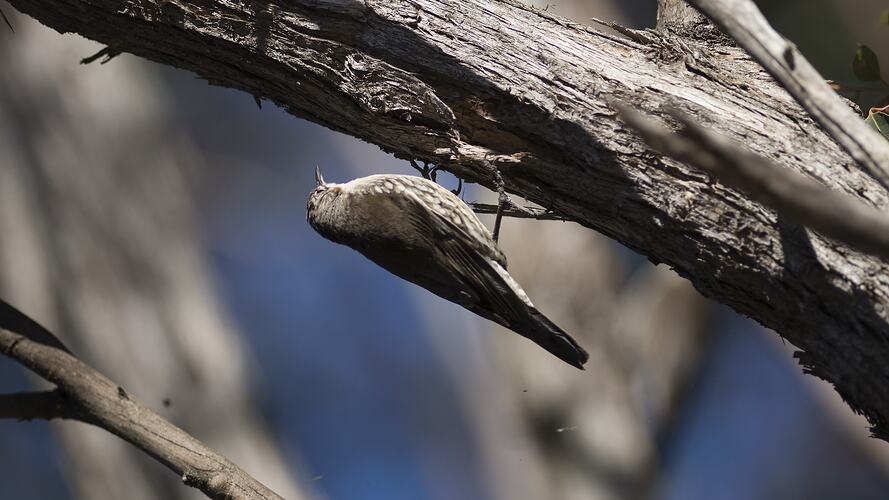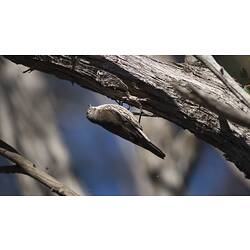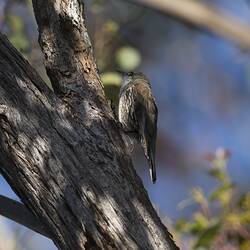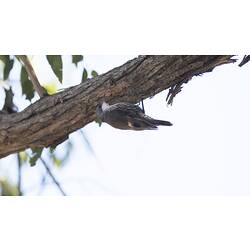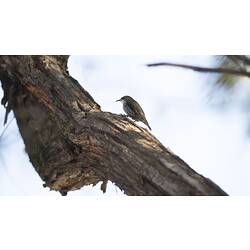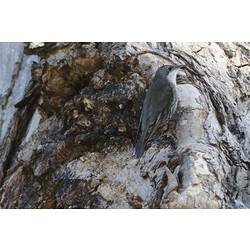General Description
White-throated Treecreepers are dark brown with a distinct white throat and chest. They have white streaks and a barred undertail. Females have an orange cheek patch. The bill is long and curved. Bill to tail length is up to 17 cm. They ascend tree trunks in a characteristic spiralling motion. Call a loud continuous piping call. They are commonly heard before they are seen.
Biology
White-throated Treecreepers establish permanent territories. Their diet consists mainly of ants, but they will also eat other invertebrates and nectar. They are rarely seen on the ground, foraging instead in trees, capturing prey while perched or by climbing head first up tree trunks using their long curved bills to probe under the bark and in crevices for invertebrates. Nests are built by the females within tree hollows and are lined with fur, hair and bark. Two broods can be raised in the breeding season, with chicks receiving care from both parents. Typical clutch size is two to three eggs. Unlike other treecreepers, they do not partake in cooperative breeding.
Distribution
South-eastern and eastern mainland Australia.
Habitat
Forests, rainforests and woodlands.
More Information
-
Animal Type
-
Animal SubType
-
Brief Id
A small brown bird with a white throat. Often seen spiralling up tree trunks.
-
Colours
White, Brown
-
Maximum Size
17 cm
-
Habitats
-
Diet
Omnivore
-
Diet Categories
Invertebrates, Nectar
-
Endemicity
-
Commercial
No
-
Conservation Statuses
CITES: Not listed, FFG Threatened List: Not listed, EPBC Act 1999: Not listed, IUCN Red List: Least Concern
-
Taxon Name
-
Common Name
White-throated Treecreeper
-
Kingdom
-
Phylum
-
Subphylum
-
Class
-
Order
-
Family
-
Genus
-
Species Name
leucophaeus
